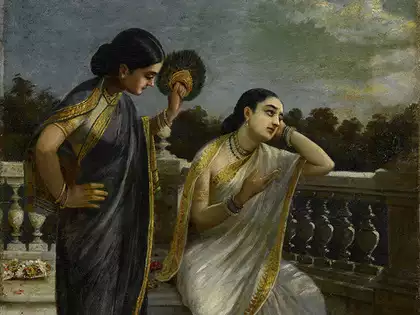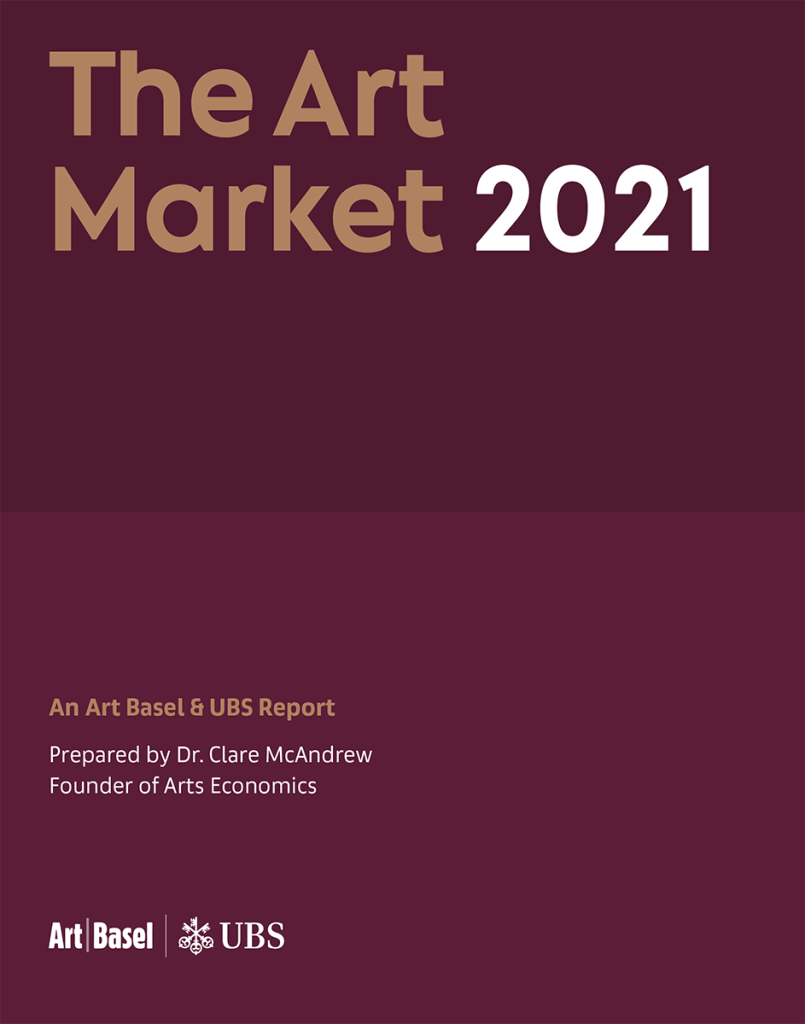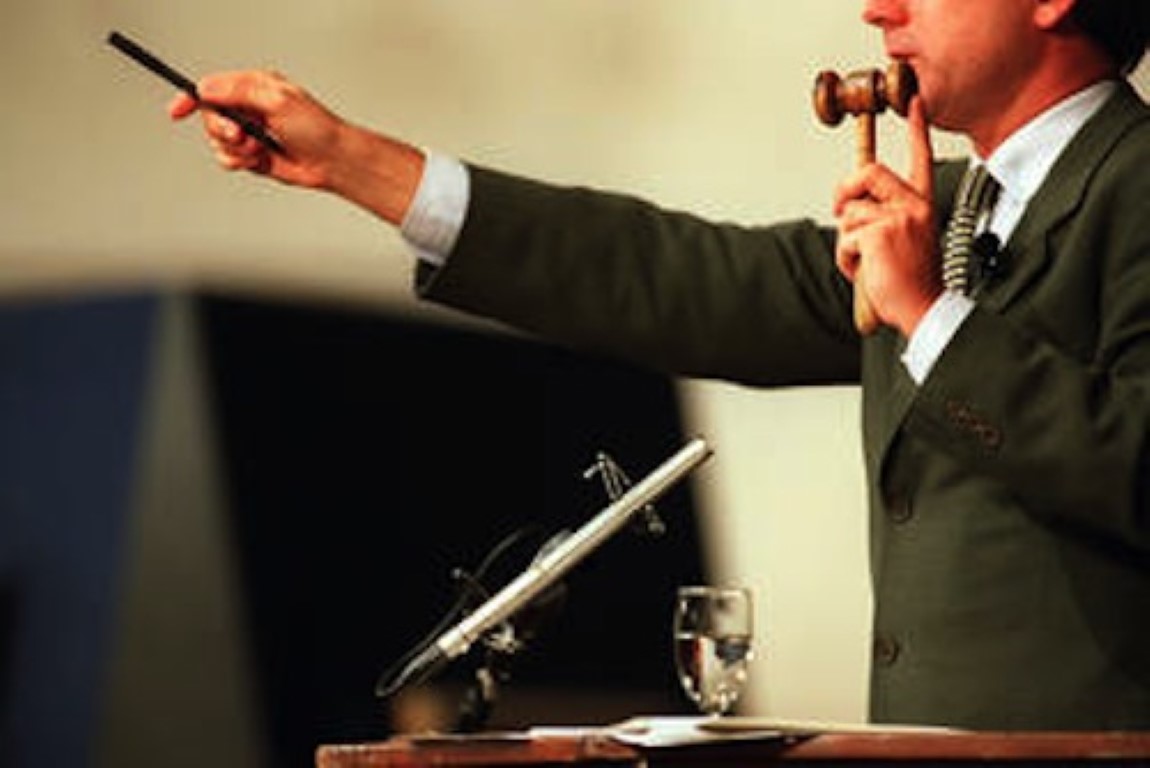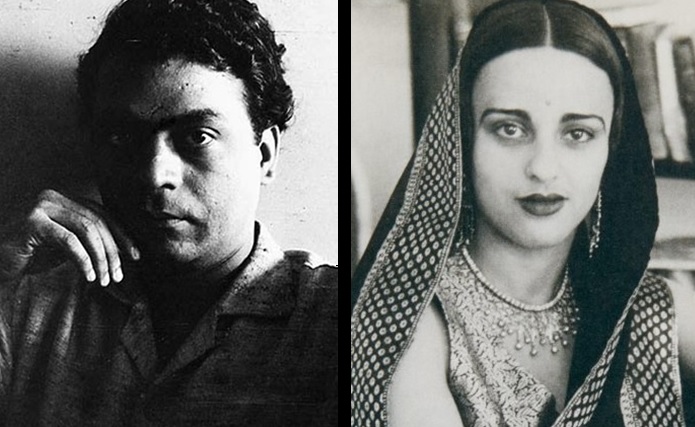Tsuktiben Jamir
He is by far India’s most well-known painter and artist. Even in the most rural villages, prints and copies of his paintings may be found adorning the walls of homes. Unfortunately, in many cases, people are not familiar with the artist’s name. Raja Ravi Varma (29th April 1848- 2nd October 1906) was an Indian Malayali painter who was born in Kilimanoor, Travancore state (now Kerala), to Ezhumavil Neelakanthan Bhattariripad and Umayamba Bai Thampuratty. His works of art were more than often inspired by the epics and legends found in the Puranas, Mahabharata, and Ramayana. Raja Ravi Varma was the first to make copies (or lithographs) of his artworks inexpensive and accessible. Because of this, his paintings allowed people from lower social strata to enjoy the beauty of Indian history and culture as well.
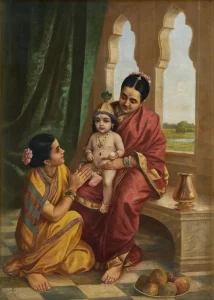
Courtesy: Mutual Art.
The lower castes were not allowed into many temples back then. His artwork thus became a significant worship material for these people. His social contributions were acknowledged by the then Viceroy, who gave him the Kaiser-e-Hind Gold Medal in 1904, just two years before his death.
Some of Raja Ravi Varma’s paintings have been recently making the rounds in auctions held in various galleries. For starters, Raja Ravi Varma’s ‘Yashoda Krishna’ (1895) was auctioned off at the Mumbai Pundole Art Gallery and sold for a whopping Rs 38 crore. According to officials of the gallery that held the auction, this was the highest price they have reeled in for a Raja Ravi Varma artwork. Fritz Schleicher, a German native who had purchased the Ravi Verma Press in Pune, had previously owned the ‘Yashoda Krishna’ painting as part of his family’s collection. Initially set at Rs. 15 crore, the painting’s price increased to Rs. 38 crore at the auction. The Director of the gallery Dadiba Pundole said, “This could be a world record for Ravi Varma paintings… I am not aware of any other painting of his being sold for such a high price.”
‘Lord Shiva and Family’ (1903), another painting by Ravi Varma, fetched Rs 16 crore at the same auction. A painting that showed the “killing of Kamsa and a youthful Krishna” was also sold for Rs 4 crore at the Pundole Art Gallery Auction. Another one of Raja Ravi Varma’s paintings, Damyanti (1895), was auctioned off earlier this year at Sotheby’s in New York for about Rs. 11.9 crores.
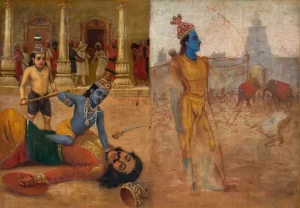
Courtesy: Mutual Art.
A few years ago, the painting “Radha in the Moonlight” (1890) by Raja Ravi Varma was also auctioned off at the Pundole Art Gallery and sold for Rs 20 crore.
Raja Ravi Varma is often referred to as the “Father of Modern Indian Art,” and rightfully so. In the 19th century, Ravi Varma’s paintings reshaped the mould for Indian art since he employed oils and a more European aesthetic into his work. In the history of Indian art, his name is indelibly etched. The paintings of Ravi Varma mixed realism and naturalism with Indian mythology and also displayed the influence of his art instructor, Theodore Jensen. In order to ensure that the whole populace and not only the wealthy had access to his paintings, Raja Ravi Varma established his own press in 1894. Ravi Varma’s paintings have been widely exhibited all over the world and have won several awards.

